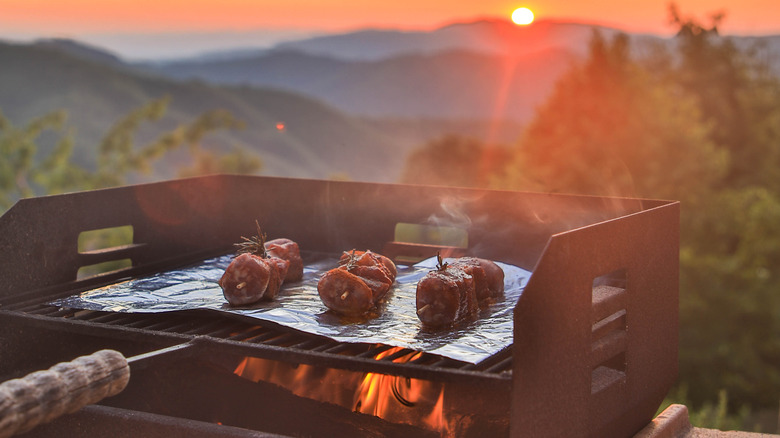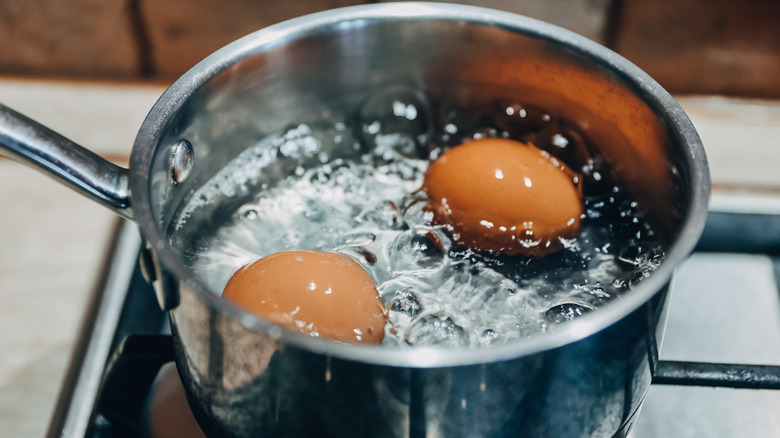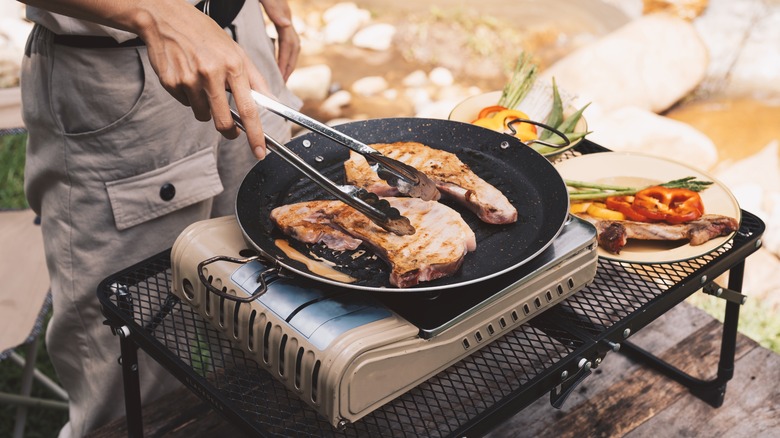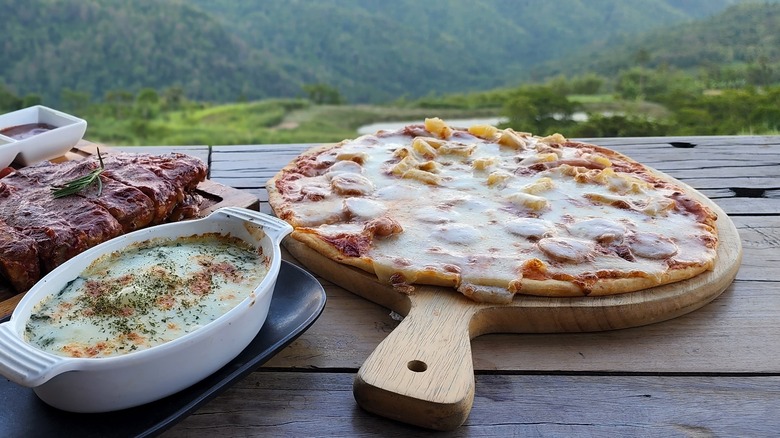What To Know Before Cooking At High Elevations
If you're moving from the coast to the mountains, or even just taking a camping trip or a hiking trip, you should know that cooking at higher altitudes works differently than your standard, sea-level cookouts. According to the U.S. Department of Safety and Agriculture, "high altitude" is often considered to be 3,000 feet (about 910 meters) or higher, but the air starts to change around 2,000 feet (610 meters) above sea level. Much of the western United States qualifies, as do plenty of other regions around the world. If you're traveling and you know you'll be cooking, it's worth checking the elevation.
When it comes to cooking at high altitudes, there are two key things to remember that will affect your food: Low air pressure and low humidity. The air becomes thinner the higher up you go, which changes the way you heat water, while the lack of moisture in the air can dry out foods as you're cooking. Water starts to boil faster, but food has to cook for longer, which might sound unintuitive until you get used to it.
Cooking under high pressure
At sea level, water boils at 212 degrees Fahrenheit (or an even 100 degrees Celsius). For every 500 feet you climb above sea level, that boiling point lowers by a degree, so a pot of water at 2,000 feet boils at 208 degrees Fahrenheit. Denver, Colorado, for example, is 5,000 feet up and a pot of water starts boiling at around 202 degrees Fahrenheit. Mexico City is over 7,000 feet, which means water boils at just under 200 degrees Fahrenheit. This happens because of air pressure: A liquid turns into vapor when its internal pressure matches the pressure outside. When that outside pressure goes down because the air is thinner, so does the liquid's boiling point.
When it comes to cooking, this means you'll have to cook food for longer in boiling water. After all, the boiling water is now at a cooler temperature, which means your food isn't getting cooked as fast as you're used to. Turning up the heat on your stove or grill won't help here — once water reaches its boiling point, it can't get any hotter while it's boiling. Your vegetables or your pasta need to cook for longer instead.
Elevated foods dry out
On top of that, high altitude areas tend to be drier than sea-level, because that lower atmospheric pressure means there's less moisture in the air. And that lower humidity can dry out your food while it cooks, especially meat at high elevation. Lean cuts of meat will dry out even faster because they have higher water content. When grilling, it helps to baste the meat to make up for that lack of humidity. You're likely used to cooking with some moisture in the air at lower elevations, so cook it for longer and cover it if you can.
The USDA says that if meat is cooked (especially if it's braised or simmered, which involves more water) at 5,000 feet above sea level, it might need to cook for 25% longer than normal. Because of this, it also highly recommends using a meat thermometer so you can keep an eye on the meat's internal temperature. None of this is a problem if the food is cooking inside an oven, because sea-level cooking times still apply inside a safely sealed oven. It mostly matters if the meat is exposed to air at all.
High-altitude baking
Besides cooking for longer, that lower air pressure also changes the way that cake or bread bakes. Any recipe involving yeast, baking soda, or any sort of baking powder is going to expand — and then collapse — faster than normal. This is because baking involves leavening gasses (bubbles of carbon dioxide or water vapor) which rise while cooking, and this gas expands faster at higher elevations. While some foods need to cook longer, that fast-expanding gas can create holes and mess with the structure of baked goods if it cooks too long.
Instead of cooking for longer, you might consider decreasing the cooking time when baking with dough. And remember, it's not just meat that can dry out: Your baked bread can just as easily become overly stiff. To compensate, adding extra egg or less sugar can both help your dish retain its moisture, and you might experiment with less baking soda or powder. It can be complicated when you're cooking pizza at high altitudes, and it may take some trial and error with adjusting ingredients to get sturdy dough that isn't too dry.



